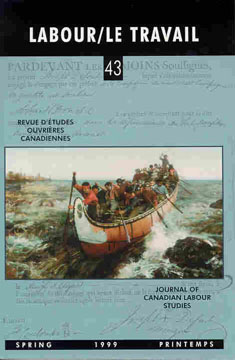Abstract
The Toronto Mechanics' Institute (1831-1883) served as one of the principle institutions of art instruction, the employment of artists (female and male), and exhibition of art in 19th century Toronto. Artists and illustrators now well known in the annals of Canadian art including Laura Bell, Mary Cooper, Richard Baigent, William Bengough, Robert Gagen, William Hind, Henry Martin, George Reid, Kivas Tulley, John Tully, and E. K. Westmacott were amongst the list of teachers and exhibitors at this Institute which attracted 6,000 to 9,000 people and as many as 700 paintings and photographs to its Annual Exhibition by mid-century. Founded for the advancement of worker self-education in the period prior to the Rebellion, the Toronto Mechanics' Institute continued to play a vital role for the Toronto working class in both practical design and fine art throughout the century until the emergence of public adult educational provisions in the latter quarter of the century. The minute books and annual reports of the Mechanics' Institute provide an instructive source for the researcher and demonstrate that contrary to some received wisdom that the mechanics' institutes were middle-class institutions, the Toronto Mechanics' Institute witnessed many lively debates on relevant social topics and remained committed to a working-class orientation throughout its existence despite the changing compositions of its Board. This article sets forth some archival findings and makes some theoretical refinements to the debates on the Mechanics' Institute in the hope of contributing to the on-going research.
Résumé
Le Toronto Mechanics' Institute (1831-1883) était l'un des principaux établissements offrant à Toronto, au XIXe siècle, un endroit où travailler, étudier les arts et exposer. Des artistes et des illustrateurs maintenant célèbres dans les annales des arts canadiens, dont Laura Bell, Mary Cooper, Richard Baigent, William Bengough, Robert Gagen, William Hind, Henry Martin, George Reid, Kivas Tulley, John Tully et E.K. Westmacott, étaient parmi ceux et celles qui enseignaient et exposaient à l'Institut, dont le salon annuel accueillait, au milieu du XIXe siècle, entre 6 000 et 9 000 visiteurs et présentait jusqu'à 700 tableaux et photographies.
Fondé pour favoriser l'apprentissage autonome des travailleurs durant la période qui a précédé la Rébellion du Haut-Canada, le Toronto Mechanics' Institute joua un rôle fort important pour la classe ouvrière de Toronto tout au long du XIXe siècle, tant dans le domaine des arts plastiques que dans celui des beaux-arts. Son influence ne diminua qu'après 1875, lorsque le gouvernement prit des mesures pour favoriser davantage l'enseignement aux adultes. Les procès-verbaux et les rapports annuels de l'Institut sont une mine d'information pour les chercheurs. Ils montrent que, contrairement aux idées reçues, les instituts de ce genre n'étaient pas des établissements de la classe moyenne. Le Toronto Mechanics' Institute, a été le théâtre de nombreux débats vigoureux sur des questions de grande importance sociale et n'a jamais dévié de son orientation ouvrière, malgré les fréquentes recompositions de son conseil d'administration. L'auteure présente quelques constatations puisées dans des archives et apporte quelques précisions théoriques sur les débats que suscite le Toronto Mechanics' Institute. Elle espère ainsi favoriser d'autres travaux de recherche sur ce sujet.
